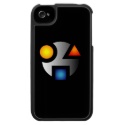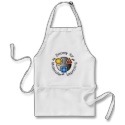|
|
Reference type: Journal
Authors: Lieberzeit PA, Bajwa S, Mustafa G, Wanchareansak T, Dickert FL
Article Title: From metal ions to biospecies: template-assisted synthesis as a strategy to generate artificial receptor materials.
Publication date: 2011
Journal: Advanced Materials Letters
Volume: 2
Issue: (5)
Page numbers: 319-321.
DOI: 10.5185/amlett.2011.1024am2011
Abstract: Materials science increasingly focuses on generating "smart", i.e. highly functional, advanced matrices. Selective recognition can be implemented into man-made polymers by template-assisted synthesis. The method covers a surprising size range: it is possible to generate sensitivity and selectivity towards bivalent metal cations, such as Cu2+, in polyacrylate matrices. Despite the template being substantially smaller in size than the monomers, recognition can be achieved. Furthermore, acrylates can be templated with much larger species, such as influenza viruses. This leads to a nanostructured polymer surface that selectively re-binds the respective virion. Additional enhancement of sensitivity can be achieved by composite materials. Silver sulphide nanoparticles for instance show very appreciable affinity towards butanol vapors. When blending into butanol-imprinted polyurethane, the material incorporates three times more of the alcohol. Copyright © 2011 VBRI press.
Template and target information: copper ion, Cu(II), influenza virus
Author keywords: molecular imprinting, metal ion sensing, composite materials, virus imprinting, sensor
|


 MI cryptic logo iphone4 speckcase
MI cryptic logo iphone4 speckcase







 SMI tie pink
SMI tie pink







 SMI logo apron
SMI logo apron






